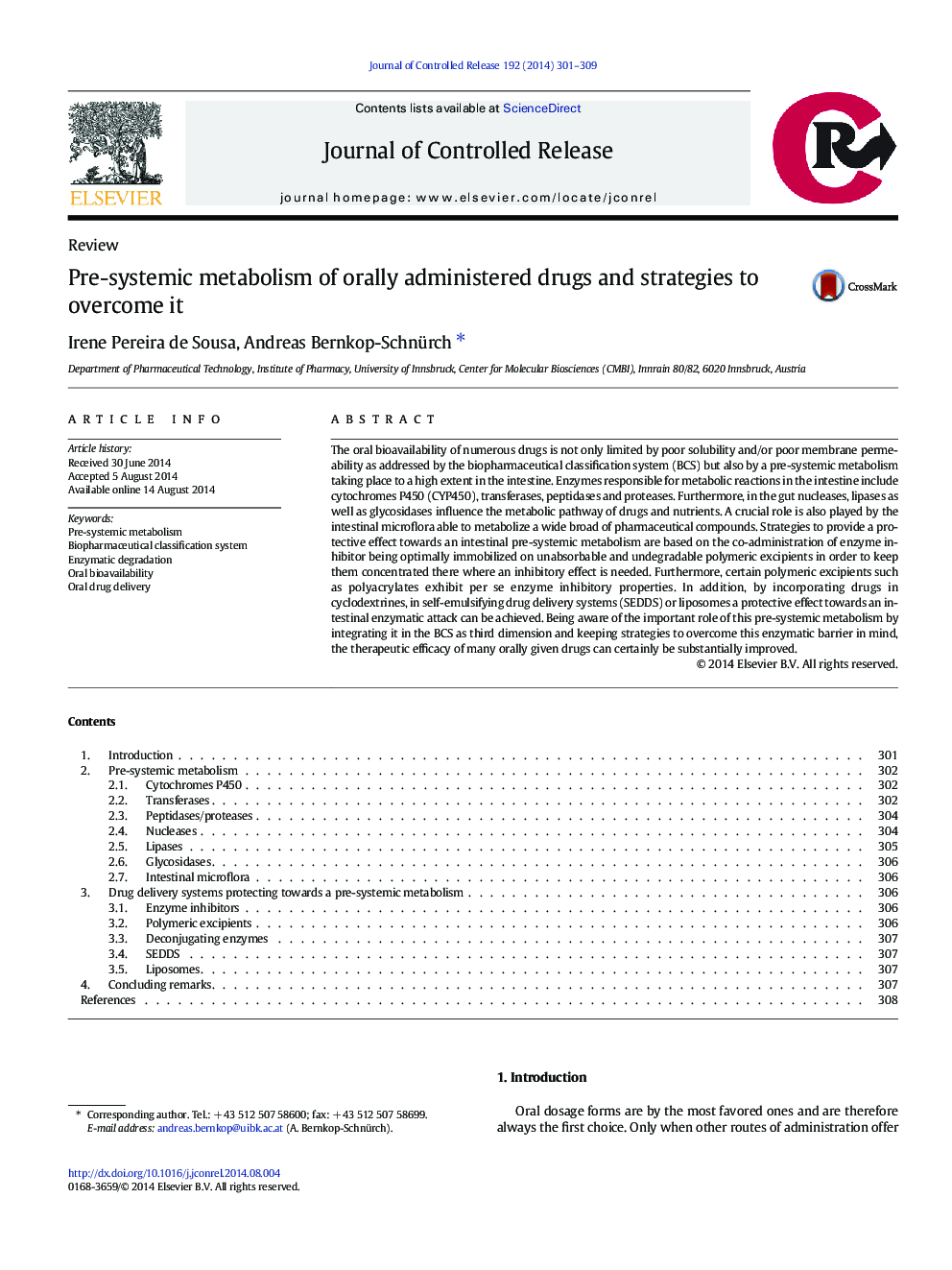| Article ID | Journal | Published Year | Pages | File Type |
|---|---|---|---|---|
| 1423913 | Journal of Controlled Release | 2014 | 9 Pages |
The oral bioavailability of numerous drugs is not only limited by poor solubility and/or poor membrane permeability as addressed by the biopharmaceutical classification system (BCS) but also by a pre-systemic metabolism taking place to a high extent in the intestine. Enzymes responsible for metabolic reactions in the intestine include cytochromes P450 (CYP450), transferases, peptidases and proteases. Furthermore, in the gut nucleases, lipases as well as glycosidases influence the metabolic pathway of drugs and nutrients. A crucial role is also played by the intestinal microflora able to metabolize a wide broad of pharmaceutical compounds. Strategies to provide a protective effect towards an intestinal pre-systemic metabolism are based on the co-administration of enzyme inhibitor being optimally immobilized on unabsorbable and undegradable polymeric excipients in order to keep them concentrated there where an inhibitory effect is needed. Furthermore, certain polymeric excipients such as polyacrylates exhibit per se enzyme inhibitory properties. In addition, by incorporating drugs in cyclodextrines, in self-emulsifying drug delivery systems (SEDDS) or liposomes a protective effect towards an intestinal enzymatic attack can be achieved. Being aware of the important role of this pre-systemic metabolism by integrating it in the BCS as third dimension and keeping strategies to overcome this enzymatic barrier in mind, the therapeutic efficacy of many orally given drugs can certainly be substantially improved.
Graphical abstractFigure optionsDownload full-size imageDownload high-quality image (129 K)Download as PowerPoint slide
